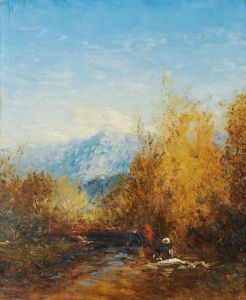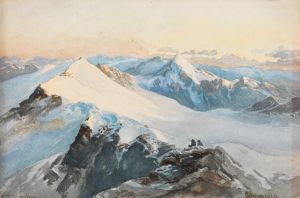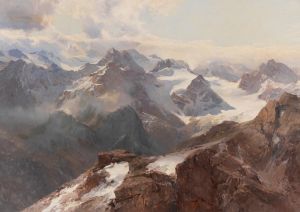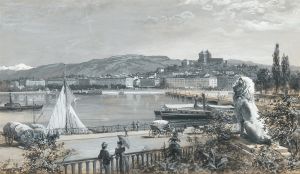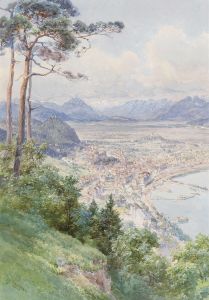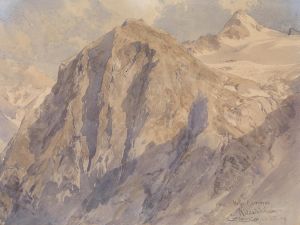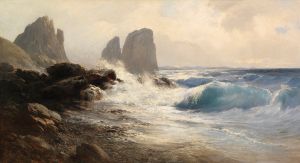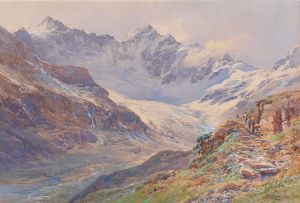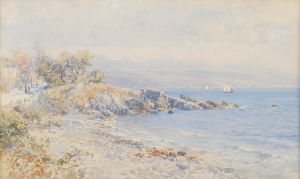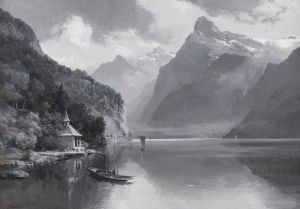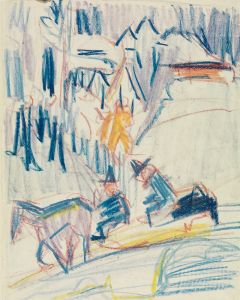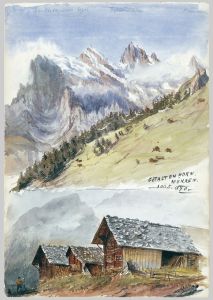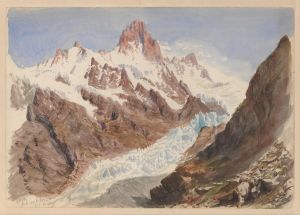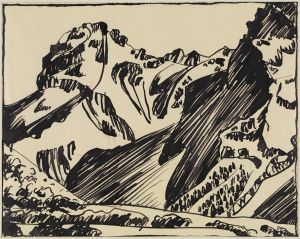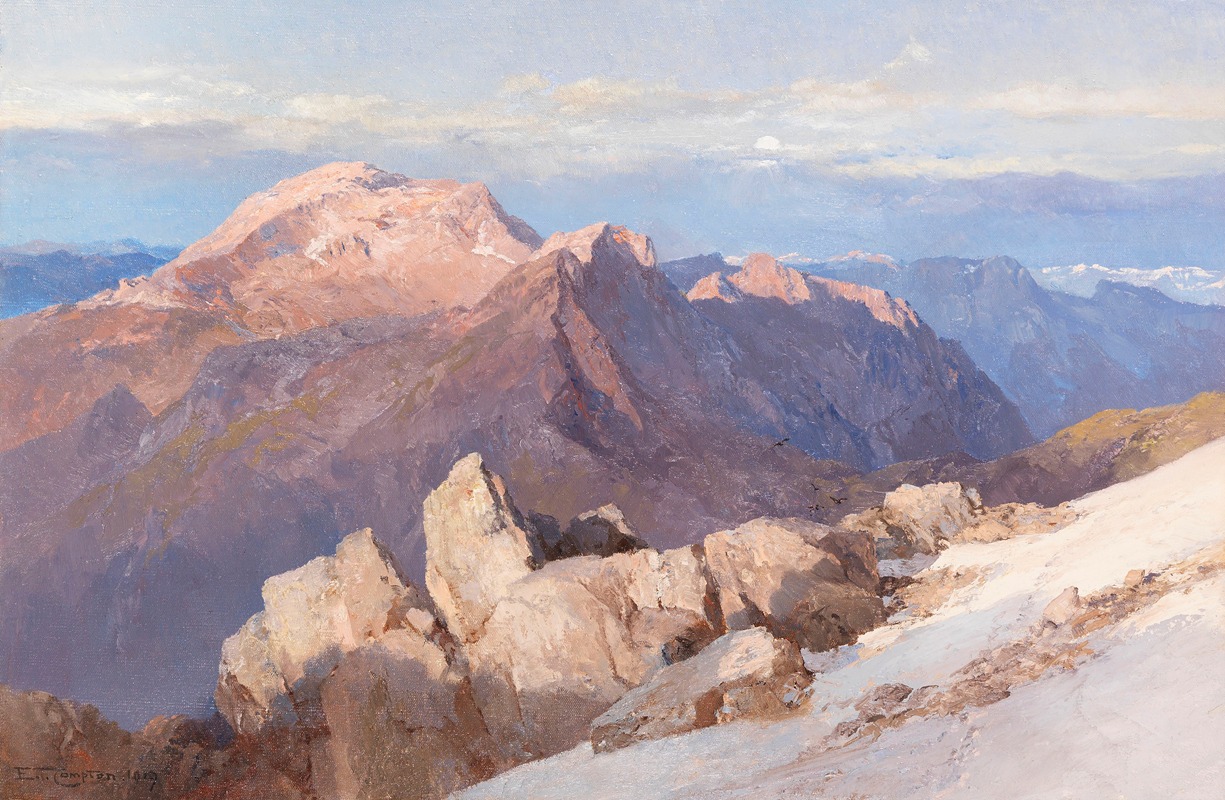
Hoher Göll vom Watzmann-Hocheck
A hand-painted replica of Edward Theodore Compton’s masterpiece Hoher Göll vom Watzmann-Hocheck, meticulously crafted by professional artists to capture the true essence of the original. Each piece is created with museum-quality canvas and rare mineral pigments, carefully painted by experienced artists with delicate brushstrokes and rich, layered colors to perfectly recreate the texture of the original artwork. Unlike machine-printed reproductions, this hand-painted version brings the painting to life, infused with the artist’s emotions and skill in every stroke. Whether for personal collection or home decoration, it instantly elevates the artistic atmosphere of any space.
Edward Theodore Compton (1849–1921) was a British-born artist, illustrator, and mountaineer, renowned for his detailed and dramatic depictions of alpine landscapes. His works often captured the majesty and grandeur of the mountains he climbed and admired. One such painting, Hoher Göll vom Watzmann-Hocheck, exemplifies his skill in portraying the rugged beauty of the Alps.
The painting depicts the Hoher Göll, a prominent mountain in the Berchtesgaden Alps, as seen from the Watzmann-Hocheck, one of the peaks of the Watzmann massif. The Hoher Göll, located on the border between Germany and Austria, is a striking and imposing peak, making it a popular subject for artists and mountaineers alike. Compton's work captures the dramatic interplay of light and shadow on the mountain's rocky surfaces, emphasizing its towering presence and the surrounding alpine environment.
Compton's artistic style is characterized by meticulous attention to detail and a deep understanding of alpine geography, which he gained through his extensive mountaineering experience. He climbed many of the peaks he painted, allowing him to observe and document their features firsthand. This intimate knowledge of the mountains is evident in Hoher Göll vom Watzmann-Hocheck, where the composition reflects both the physical grandeur of the landscape and the emotional impact it has on the viewer.
The painting is executed in a realistic yet atmospheric style, typical of Compton's work. His use of color and light conveys the crispness of the alpine air and the rugged textures of the mountain terrain. The perspective from the Watzmann-Hocheck provides a unique vantage point, showcasing the Hoher Göll in its natural context, surrounded by the dramatic scenery of the Berchtesgaden Alps.
While the exact date of the painting's creation is not specified, it is consistent with Compton's body of work, which primarily focused on alpine landscapes during the late 19th and early 20th centuries. His paintings were highly regarded during his lifetime and continue to be celebrated for their artistic and historical value.
Hoher Göll vom Watzmann-Hocheck is an example of Compton's ability to combine his artistic talent with his passion for mountaineering, resulting in works that are both visually stunning and geographically accurate. Today, his paintings are appreciated not only as works of art but also as historical records of the alpine landscapes of his time.





